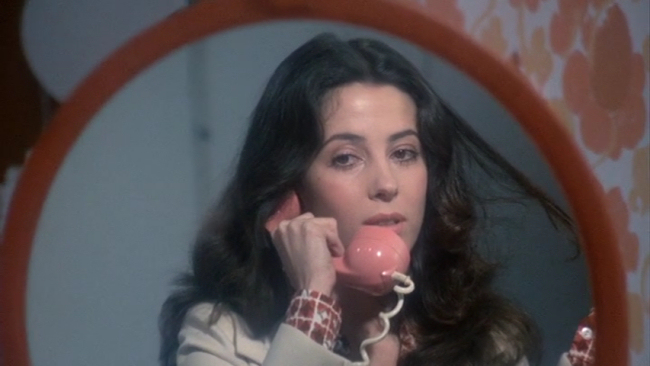
You have to figure insane asylums are filled with stories. Robert Bloch wrote five featured in the 1972 Amicus anthology film Asylum. Solidly directed by Roy Ward Baker and featuring a great cast that includes Patrick Magee, Charlotte Rampling, Peter Cushing, Herbert Lom, and Britt Ekland, it's a morbid pleasure with plenty of nice, lurid atmosphere. It also contains some rumination on identity and the validity of sanity as a concept.

The framing story involves a young, confident doctor named Martin (Dr. Martin) interviewing for a job at an asylum now being run by Dr. Rutherford, played by Patrick Magee, who was forced to take over the place recently after the previous head of the asylum went mad and joined the inmates. As a test to see if Martin is worthy of a post at the asylum, he's tasked with interviewing each patient and figuring out which one is the previous head of the asylum--he or she has invented a whole different name and past. I enjoyed this device a lot--it adds another spur for the viewer's attention as one is forced to contemplate not only if the subject is the one Martin's looking for but if the story they're telling has any truth to it. And, of course, it's always possible Rutherford is an inmate who's taken over, it wouldn't be surprising given that Rutherford is Patrick Magee with his idiosyncratic twitchy performance.

The first interview is with a woman named Bonnie (Barbara Parkins) whose story is mostly about her lover, Walter (Richard Todd), who murders his wife for her. This was the least effective story of the group, its tension derived from dismembered body parts coming back to life in a not entirely convincing manner.

The second story is very nice, featuring Peter Cushing as a mysterious Mr. Smith who comes to the subject of the interview, a tailor named Bruno (Barry Morse), to hire him to make a suit out of strange glowing fabric. Bruno is only too eager to accept the job because he's behind on his rent. The story is filled with wonderful gloom from the darkness of Bruno's shabby store to the rain-slicked exteriors and it plays nicely on economic tension as Bruno, faced with the loss of his livelihood, is dependent on the bizarre, weird, fanciful, and what turns out to be ghoulish, needs of the bourgeois Mr. Smith.

The third story is good mainly for Charlotte Rampling's performance. She plays the subject of the interview, Barbara, and she recounts a story of her life being upended by her relationship with a woman named Lucy played by Britt Ekland. Ekland and Rampling are a very strange pair, Rampling giving a complex performance of a woman sinking in feelings of addiction, dependence, and abandonment and Ekland not managing much more than a pretty flutter of her eyelashes. But it makes sense for the story which partly seems to draw on anxieties related to the stigma of homosexual relationships at the time and it's another way the movie subtly pushes against prevalent notions of what constitute insanity.

Herbert Lom plays the last subject, Dr. Byron, who makes weird little mannequins in his room. Inevitably, he brings one to life in order to exact revenge, this story not quite as effectively creepy as the Doctor Who serial Terror of the Autons from the year before, ironically because the inferior special effects on Doctor Who were in this case much creepier.
Twitter Sonnet #1047
We wake as breezes stop in subtle light.
As coats in thinning fog conduct a song.
The silent push attends to guide the sight.
A rippling grass remains and moves along.
The sun returns on reddish days to watch.
Behind a fork of jelly beans it burns.
The distant tops of fossil trees are notched.
What leaves'll dream the highest flower learns.
In plain developed film a dress appeared.
A turning hail could not sustain its wrath.
In iris shot a motor car's a tear.
In silver steps the snow aligned a path.
Imposed beyond the furnace flames array.
Withdrawing shreds of cloud concede the day.

No comments:
Post a Comment